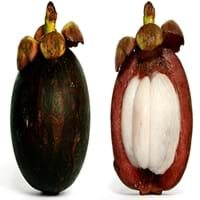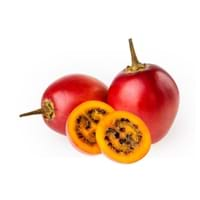Health Benefits
Anti-oxidant properties, Anti-inflammatory properties, Controls blood pressure, Diarrhea treatment
Cancer prevention, Improves eye vision, Prevents diabetes, Prevents high blood pressure
General Benefits
Anti-inflammatory properties, Digestive aid
Cures inflamed tonsils, Helps in weight loss, Maintains healthy cholesterol level
Skin Benefits
Treatment of acne, Treats minor cuts
Anti-aging benefits, Protects skin from oxidative stress
Hair Benefits
NA
Protects hair
Allergy Symptoms
NA
Anaphylaxis, Coughing, Diarrhea, Eczema, Hives, Itching sensation in throat, Nausea, Skin Rashes, Runny nose, Sneezing, Swelling of mouth, tongue or lips, Vomiting, Wheezing
Side Effects
NA
Heart burn
Best Time to Eat
As a snack in the late afternoon, Eat the fresh ones, avoid mixing with any other foods, don't eat after meal., Morning time (before lunch)
Along with meal, As a snack in the late afternoon, Don't consume at night and before bed, Don't eat after meal, Morning time (before lunch)
Vitamin B5 (Pantothenic Acid)
Vitamin C (Ascorbic Acid)
Vitamin E (Tocopherole)
Not Available
Vitamin K (Phyllochinone)
Not Available
Lutein+Zeaxanthin
Not Available
Phytosterol
Not Available
Calories in Fresh Fruit with Peel
Not Available
Calories in Fresh Fruit without Peel
Not Available
Calories in Frozen Form
Not Available
Not Available
Calories in Dried Form
Not Available
Calories in Pie
Not Available
Type
Tropical
Fruit vegetable
Season
Winter
All seasons
Varieties
Button Mangosteen and Lemondrop Mangosteen
Tamarillo bold gold, Tamarillo red beau, Tamarillo tango and Tamarillo teds red
Color
Purple
Orange, Red, Yellow
Inside Color
White
Creamy Yellow
Origin
Moluccas of Indonesia, Sunda Islands
South Africa
Soil Type
NA
Sandy loam, Well-drained
Climatic Conditions
NA
Rainfall, Warm
Facts about
NA
- Up until 1967, tamarillos were referred to as tree tomatoes.
- The name tamarillo is derived from Maori word 'tama' which means leadership and rillo from spanish word 'amarillo' which means yellow.
Top Producer
NA
New Zealand
Other Countries
NA
Australia, Chile, Colombia, Malaysia, Peru, Philippines
Top Importer
United States of America
United States of America
Top Exporter
Thailand
New Zealand
Botanical Name
Garcinia mangostana
Solanum betaceum
Synonym
Garcinia mangostana
tree tomato, genus Cyphomandra, Cyphomandra
Subkingdom
Tracheobionta
Tracheobionta
Division
NA
Magnoliophyta
Class
Unknown
Magnoliopsida
Subclass
Dillenhidae
Asteridae
Order
Malpighiales
Solanales
Family
Clusiaceae
Solanaceae
Species
G. mangostana
Solanum betaceum
Generic Group
Not Available
Nightshade
Difference Between Purple Mangosteen and Tamarillo
We might think that Purple Mangosteen and Tamarillo are similar with respect to nutritional value and health benefits. But the nutrient content of both fruits is different. Purple Mangosteen and Tamarillo Facts such as their taste, shape, color, and size are also distinct. The difference between Purple Mangosteen and Tamarillo is explained here.
The amount of calories in 100 gm of fresh Purple Mangosteen and Tamarillo with peel is 63.00 kcal and Not Available and the amount of calories without peel is Not Available and 31.00 kcal respectively. Thus, Purple Mangosteen and Tamarillo belong to and category.These fruits might or might not differ with respect to their scientific classification. The order of Purple Mangosteen and Tamarillo is Malpighiales and Solanales respectively. Purple Mangosteen belongs to Clusiaceae family and Tamarillo belongs to Solanaceae family. Purple Mangosteen belongs to Garcinia genus of G. mangostana species and Tamarillo belongs to Solanum genus of Solanum betaceum species. Beings plants, both fruits belong to Plantae Kingdom.









